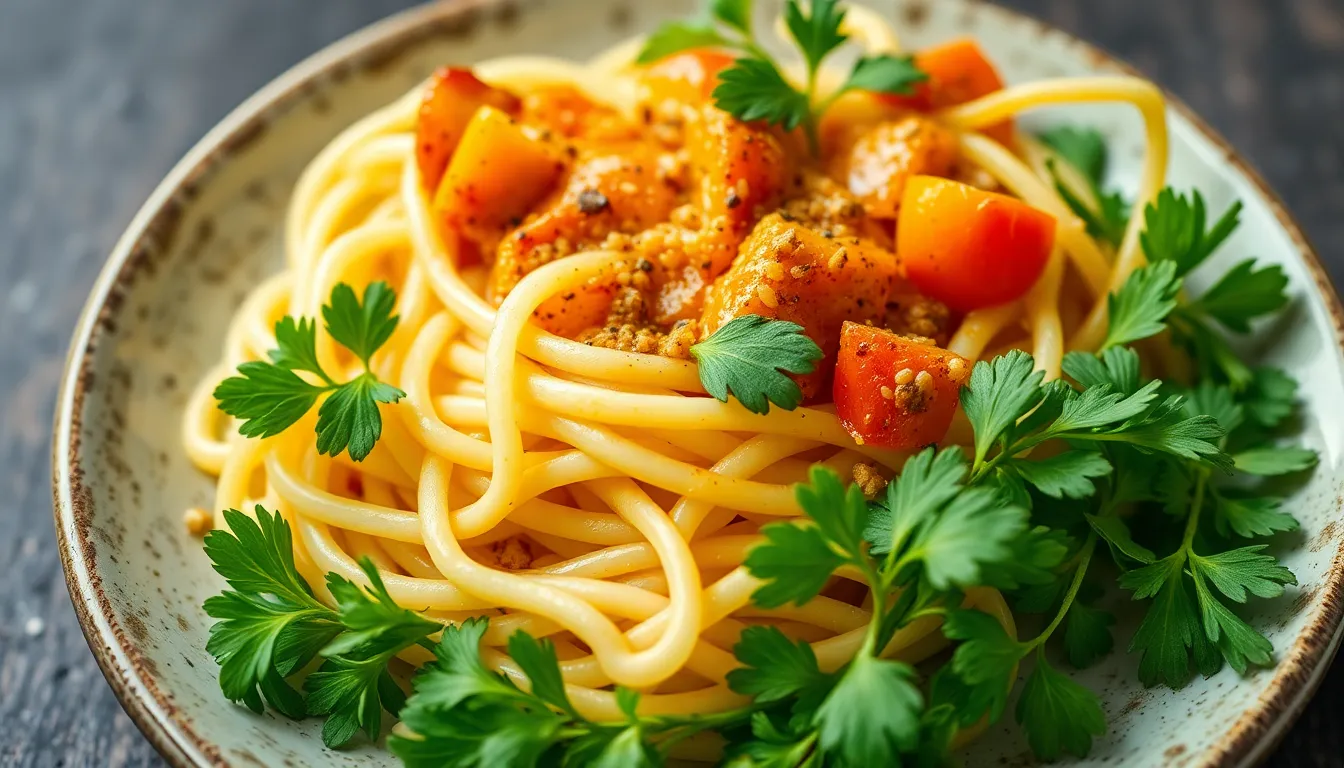The Ultimate Guide to Blanching: Timing and Techniques
I. Introduction
Blanching is a cooking technique that has stood the test of time, cherished by chefs and home cooks alike for its ability to enhance the flavor, color, and texture of fruits and vegetables. In essence, blanching involves briefly boiling food and then immediately plunging it into cold water to halt the cooking process. This process not only preserves the vibrant colors and crisp textures of your produce but also helps in removing any unwanted bitterness and enhancing their natural flavors.
In this ultimate guide, we will delve deep into the world of blanching, exploring its history, techniques, and applications. Whether you’re looking to perfect your vegetable preparations, enhance your meal presentations, or simply learn a new cooking skill, this article will provide you with all the necessary insights and practical advice.
II. Understanding Blanching
A. What is Blanching?
1. Brief history of blanching
The practice of blanching dates back centuries, originating from the need to preserve food before the advent of modern refrigeration. Ancient civilizations discovered that briefly exposing vegetables to boiling water before cooling them could prolong their freshness and make them more palatable. Today, this technique is widely used in both home kitchens and professional culinary environments.
2. Common uses in cooking
Blanching serves multiple purposes in the culinary world, including:
- Enhancing the color and texture of vegetables.
- Reducing cooking time in subsequent preparation methods.
- Facilitating the peeling of skins from fruits like tomatoes and peaches.
- Preserving the nutritional value of produce.
B. The Science Behind Blanching
1. How blanching affects texture and color
Blanching causes the cell walls of vegetables to soften slightly, which helps in retaining their crunchiness without turning them mushy. The high heat from boiling water activates the natural pigments in vegetables, leading to brighter and more appealing colors.
2. The role of enzyme inactivation
Enzymes present in raw fruits and vegetables can cause them to spoil and lose flavor over time. Blanching effectively inactivates these enzymes, which not only preserves the taste and texture but also extends the shelf life of the produce.
III. Essential Blanching Techniques
A. Preparing Ingredients for Blanching
1. Selecting the right vegetables/fruits
When choosing vegetables or fruits to blanch, opt for those that are fresh and vibrant. Common options include:
- Green Beans
- Broccoli
- Carrots
- Asparagus
- Spinach
2. Washing and cutting techniques
Before blanching, it’s essential to wash your produce thoroughly to remove any dirt or pesticides. For even cooking, cut your vegetables into uniform sizes. For leafy greens, remove any wilted leaves and rinse them well.
B. The Blanching Process
1. Boiling water vs. steaming
While both boiling and steaming are effective blanching methods, boiling is generally preferred for its speed. Here’s a quick comparison:
| Method | Advantages | Disadvantages |
|---|---|---|
| Boiling Water | Quick and efficient | Can lead to nutrient loss if overdone |
| Steaming | Retains more nutrients | Slower and may not be as effective for certain vegetables |
2. Ice bath preparation
Prepare an ice bath by filling a large bowl with cold water and ice cubes. This step is crucial, as it rapidly cools the blanched vegetables, stopping the cooking process and locking in their vibrant colors and crisp textures.
C. Step-by-Step Blanching Method
1. Boil, Blanch, Shock – Detailed steps
- Bring a large pot of water to a rolling boil.
- Prepare your ice bath in a separate bowl.
- Add the vegetables to the boiling water and allow them to cook for the recommended blanching time.
- Using a slotted spoon, immediately transfer the vegetables to the ice bath.
- Once cooled, drain the vegetables, and pat them dry with a paper towel.
2. Timing guide for different vegetables
Timing is crucial when blanching. The following table provides a guide for blanching times for common vegetables:
| Vegetable | Blanching Time (minutes) |
|---|---|
| Green Beans | 3-5 |
| Broccoli | 2-3 |
| Carrots (sliced) | 2-3 |
| Asparagus | 2-4 |
| Peas | 1-2 |
| Spinach | 1 |
IV. Timing Guide for Blanching
A. Importance of Timing
Getting the timing right is essential when blanching. Over-blanching can lead to mushy vegetables, while under-blanching might not sufficiently stop the enzymatic activity, compromising flavor and texture. Always refer to the recommended times for each type of vegetable, and keep a timer handy.
B. HTML Table: Blanching Times for Common Vegetables
For your convenience, here’s a quick reference table:
| Vegetable | Blanching Time (minutes) |
|---|---|
| Green Beans | 3-5 |
| Broccoli | 2-3 |
| Carrots (sliced) | 2-3 |
| Asparagus | 2-4 |
| Peas | 1-2 |
| Spinach | 1 |
C. Tips for Adjusting Blanching Times
When adjusting blanching times, consider the following:
- Size and thickness of the vegetables: Thicker pieces may require longer blanching.
- Freshness: Fresher vegetables may need less time than those that are slightly past their prime.
- Altitude: Cooking times can vary based on altitude, so make adjustments accordingly.
V. Common Mistakes to Avoid
A. Over-blanching vs. under-blanching
One of the most common pitfalls in blanching is losing track of time. Over-blanching results in a mushy texture, while under-blanching doesn’t effectively stop enzyme action. Always have a timer ready and check your vegetables frequently.
B. Not using an ice bath
Skipping the ice bath is another common mistake. The ice bath is crucial as it prevents the cooking process from continuing and ensures that the vibrant colors and crisp textures are maintained. Always prepare your ice bath ahead of time.
C. Poor preparation of ingredients
Neglecting to wash or cut your vegetables properly can lead to uneven cooking or unwanted bitterness. Always ensure that your produce is clean and cut uniformly to ensure even blanching.
VI. Applications of Blanched Ingredients
A. How to use blanched vegetables in recipes
Blanched vegetables can be used in an array of recipes, adding color and nutrition. Incorporate them into:
- Salads
- Pasta dishes
- Stir-fries
- Soups
B. Storage tips for blanched vegetables
Blanched vegetables can be stored for future use. Follow these guidelines:
- Cool blanched vegetables completely before storage.
- Store in airtight containers or freezer bags for up to three months in the freezer.
- Label and date your containers for easy identification.
C. Creative recipe ideas featuring blanched ingredients
Here are some creative ideas to make the most of your blanched vegetables:
- Vegetable Stir-Fry: Use a mix of blanched broccoli, carrots, and asparagus with your favorite sauce for a quick and nutritious meal.
- Blanched Veggie Salad: Toss together blanched green beans, cherry tomatoes, and feta cheese with a lemon vinaigrette.
- Frozen Vegetable Medley: Keep blanched vegetables on hand for quick additions to soups or stews throughout the winter.
VII. Conclusion
A. Recap of the benefits of blanching
Blanching is an invaluable technique that enhances the flavor, color, and texture of fruits and vegetables while preserving their nutritional content. By understanding the blanching process and perfecting your timing, you can elevate your culinary skills and enjoy the freshest ingredients year-round.
B. Encouragement to try blanching
We encourage you to incorporate blanching into your cooking routine. Experiment with different vegetables and discover how this simple technique can transform your meals. Happy cooking!




